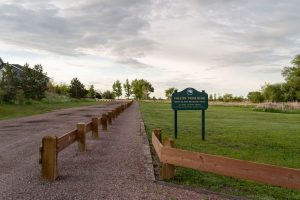Osteoporosis is a disease where bones become less dense, more fragile and more susceptible to fractures. The effects of osteoporosis are irreversible, but can be slowed and even halted if managed appropriately and early enough. Osteoporosis affects men and women, but is much more prevalent in post-menopausal women.Risk factors for developing osteoporosis include family history, thin/small frame, age and race (Caucasian and Asian). According to the National Osteoporosis Foundation, several factors influence the disease process: the use of high-dose steroids, anticonvulsants, decreased estrogen levels, decreased hormonal levels, lack of calcium consumption, poor nutrition, sedentary lifestyle, eating disorders, smoking, and alcohol use.Early diagnosis relies heavily on diagnostic testing, including a bone mineral density scan, which measures any deficit in bone density. The hip and spine are areas commonly measured because of their susceptibility to osteoporosis.When diagnosed with osteoporosis, medical care should be directed by a physician. Treatment can include, but is not limited to, drug therapy, calcium intake, hormone supplementation, nutrition counseling, physical therapy for posture education, strengthening, biomechanical training, exercise training and daily living education and retraining.Because osteoporosis is irreversible, preventative measures should be included in a healthy lifestyle. Nutrition, medication, calcium supplementation and exercise are all very important in treatment as well as in prevention.Nutrition is the primary way to prevent osteoporosis. Basic nutritional prevention includes calcium intake, vitamin supplementation (especially Vitamin D), eating a balanced diet and avoiding caffeine and carbonation, which can exacerbate the bone thinning process.Calcium is available in a variety of over-the-counter products and food. Examples of calcium-rich foods: almonds, spinach, dairy products (milk, cheese, yogurt), as well as foods that are fortified with calcium (orange juice, cereal, etc.).Exercise is another important element of treatment and prevention of osteoporosis. The National Osteoporosis Foundation states, “Just as muscle gets stronger and bigger the more you use it, a bone becomes stronger and denser.” Someone with special training in osteoporosis and exercise should direct your individual exercise program.Another goal of prevention should be to prevent fractures. Tips for preventing fractures include wearing good shoes, keeping floors clear of tripping hazards (i.e. throw rugs or clutter), using a cane or walker if needed and monitoring eyesight as poor vision can cause falls. A physical therapist can provide balance training, strengthening, postural education, exercise education and other valuable prevention information.For more information, contact health care provider or Falcon Physical Therapy at 495-3133.Web sites: Falcon Physical Therapy: www.falconpt.com; The National Osteoporosis Foundation: www.nof.org.





